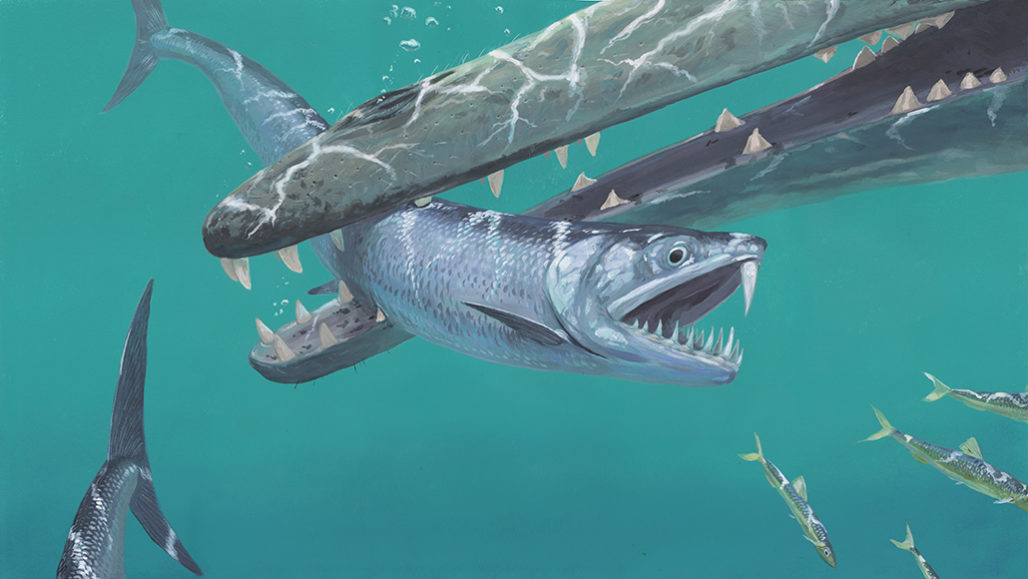CT scan: (Also known as a CAT scan). The term is short for computerized axial tomography. It is a special type of X-ray scanning technology that produces cross-sectional views of the inside of a bone or body.
dinosaur: A term that means terrible lizard. These ancient reptiles lived from about 250 million years ago to roughly 65 million years ago. All descended from egg-laying reptiles known as archosaurs. Their descendants eventually split into two lines. For many decades, they have been distinguished by their hips. The lizard-hipped line are believed to have led to such two-footed theropods as T. rex and to the lumbering four-footed Apatosaurus (once known as brontosaurus). A second line of so-called bird-hipped dinosaurs appears to have led to a widely differing group of animals that included the stegosaurs and duckbilled dinosaurs. However, it should be noted, a 2017 analysis challenged that characterization of relatedness based on hip shape.
Eocene: The term for a span of geologic time that lasted from 55.8 million to 33.9 million years ago.
epoch: (in geology) A span of time in the geologic past that was shorter than a period (which is itself, part of some era ) and marked when some dramatic changes occurred.
extinction: (adj. extinct) The permanent loss of a species, family or larger group of organisms.
fossil: Any preserved remains or traces of ancient life. There are many different types of fossils: The bones and other body parts of dinosaurs are called “body fossils.” Things like footprints are called “trace fossils.” Even specimens of dinosaur poop are fossils. The process of forming fossils is called fossilization.
ichthyologist: A biologist who specializes in studying fish.
kin: Family or relatives (sometimes even distant ones).
mackerel: An oily oceanic fish harvested as a human food. It has wavy patterns on its back. Or a term for such wavy markings as they appear on other animals, such as cats.
marine: Having to do with the ocean world or environment.
paleo: A prefix that relates something to ancient — especially geologically early — times.
paleontologist: A scientist who specializes in studying fossils, the remains of ancient organisms.
peer: (verb) To look into something, searching for details.
plankton: A small organism that drifts or floats in the sea. Depending on the species, plankton range from microscopic sizes to organisms about the size of a flea. Some are tiny animals. Others are plantlike organisms. Although individual plankton are very small, they form massive colonies, numbering in the billions. The largest animal in the world, the blue whale, lives on plankton.
predator: (adjective: predatory) A creature that preys on other animals for most or all of its food.
species: A group of similar organisms capable of producing offspring that can survive and reproduce.
Tyrannosaurus rex: A top-predator dinosaur that roamed Earth during the late Cretaceous period. Adults could be 12 meters (40 feet) long.
void: An empty space or cavity.
X-ray: A type of radiation analogous to gamma rays, but having somewhat lower energy.








